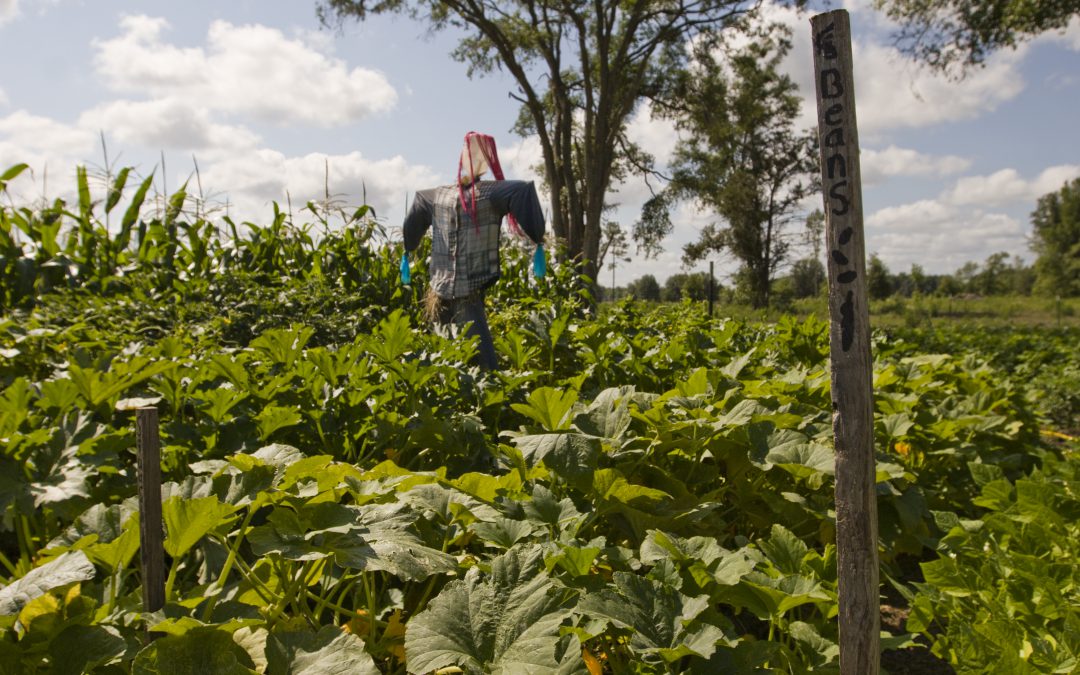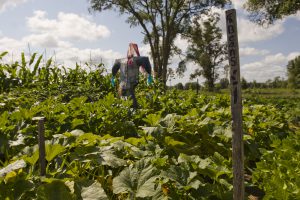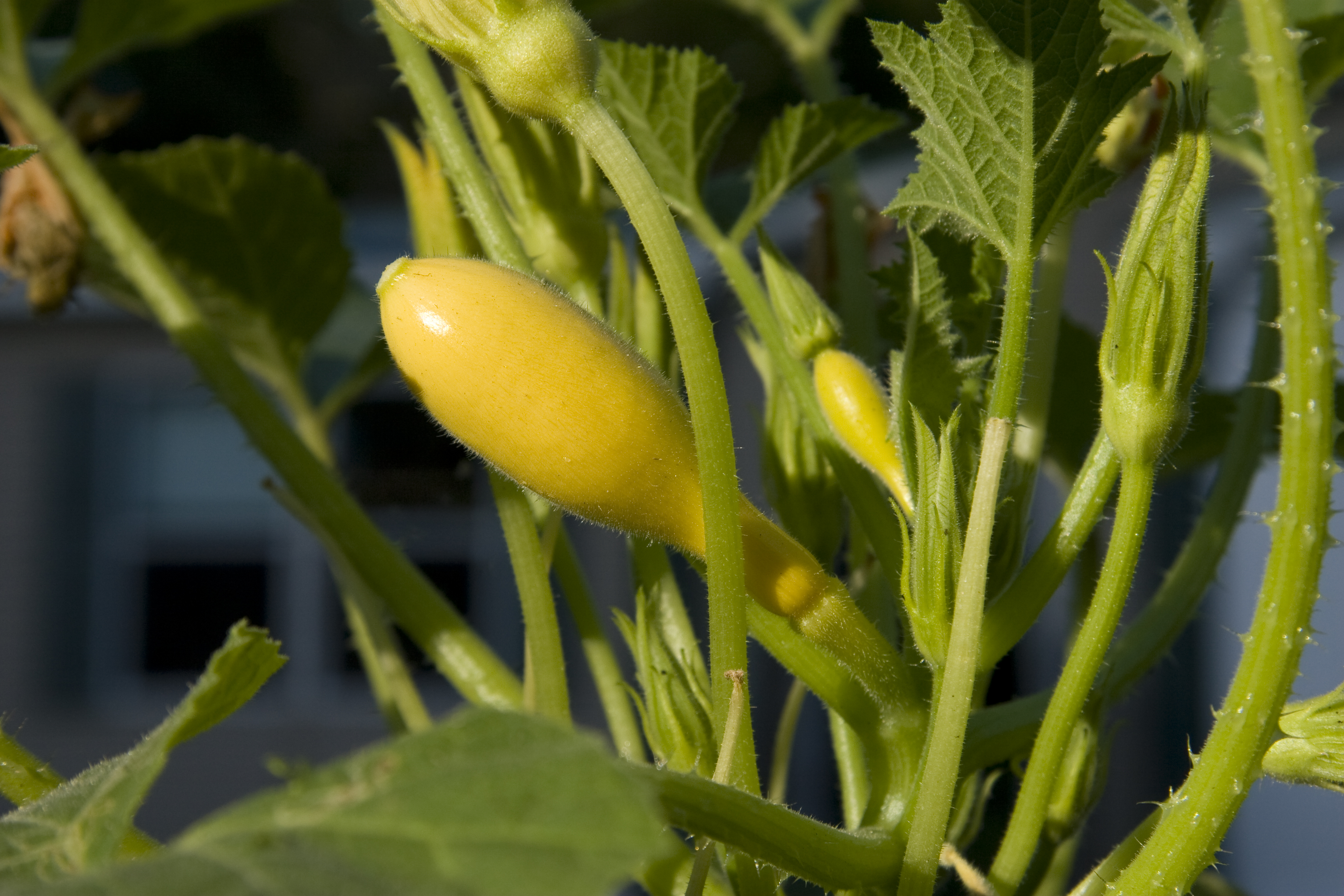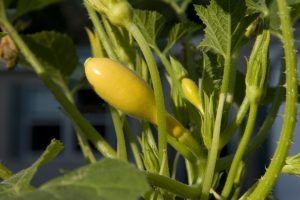
by Julie McConnell | Apr 3, 2025
Some years it can be hard to tell that the season has shifted from winter to spring in Northwest Florida, but this year we are seeing ideal temperatures for summer vegetable gardens as we shift into April. Soil temperature is affected by ambient temperature and the last few weeks of warm weather has helped to make the ground more conducive to germination of warm season seeds and support growth of transplants. If you have not started your garden yet, do not despair, you still have time to get things growing!
Below is a short list of ideas for your vegetable garden, and you can find more detailed information in the Florida Vegetable Gardening Guide.
Direct seed (plant seeds directly into the garden instead of transplant) recommendations:
Transplant (grown from seed at home or purchased in the garden center) recommendations:
More helpful resources for Florida vegetable gardeners can be found below:
Growing Vegetables in Containers
Harvesting and Storing Vegetables
Starting from Seed

by Ray Bodrey | Feb 18, 2020

A scarecrow in a 4H youth vegetable garden in Gilchrist County, Florida. Beans, vegetables, gardening, sustainability, 4H, youth programs, education. UF/IFAS Photo: Tyler Jones.
Spring & summer are certainly not far away. The following information pertains to the first step in the vegetable garden planning process. Just remember, as the soil preparation goes, so goes the vegetable production.
By far the most physical part of vegetable gardening is soil preparation. This is the foundation that your garden is built on, so let’s not cut corners at this stage. Plain and simple, poor soil prep will result in poor garden performance. Before you begin prep, it is a good idea to have a soil sample analyzed. With a soil analysis complete, a more customized fertilizer and application may be recommended for your needs. However, a complete fertilizer like 8-8-8 or 10-10-10 can be used as general purpose.
Also, pH can be determined through this test. If the soil is too acidic for vegetables, then a liming requirement may be needed. pH is key information, especially regarding planting time. If one needs lime, it is recommended to wait at least a month before planting to allow the lime to begin to adjust soil pH. Generally, a small amount of lime can be added to a garden space regardless, as lime also contains the vital micronutrients calcium and magnesium. Contact your local county extension office for more information on soil testing.
To begin the garden prep, one will first need to remove the weeds from the space. The next step is to turn the soil. This will help aerate the soil and accelerate soil decomposition which leads to higher organic matter. Turing the soil will also eliminate any soil compaction issues that would stifle seed germination. With sandy soils throughout the Panhandle, one may need to amend by spreading a rich organic compost in the space.
An application of fertilizer can be mixed in at this stage as well. Always follow the manufacturers label regarding application directions. Once complete, the soil should then be turned by digging down six to eight inches. A large garden will require a motorized tiller, but hand held implements should be fine for smaller spaces.
After the soil is turned, be sure to break up any clods and rake so that the area is level. The soil should be of a fine texture by this point. Again, this makes seed germination much easier and will assist in further root development of transplants.
To have a vegetable garden that all will envy, it begins with soil prep. Remember, not only does a vegetable garden provide nutrition, but it also provides for exercise, a feeling of accomplishment and even could save you a few bucks. Please contact your local county extension office for more information.
Supporting information for this article can be found in the UF/IFAS EDIS publication: “Florida Vegetable Gardening Guide” by Sydney Park Brown, Danielle Treadwell, J. M. Stephens and Susan Webb: http://edis.ifas.ufl.edu/pdffiles/VH/VH02100.pdf
UF/IFAS Extension is an Equal Opportunity Institution.

by Mary Salinas | Jan 25, 2018
Get a head start on your spring vegetable garden by planting seed now for some of your favorite spring crops. A great advantage to starting from seed is the seemingly endless number of varieties of your favorite vegetables that are available from online seed companies. You can experiment with new and heirloom varieties. Look to plant several different varieties that will mature at different times, thereby lengthening your harvest season.

Home grown squash. UF/IFAS Photo by Tom Wright.
Seed is also cheaper than purchasing transplants, especially if you save your seeds in optimal conditions. To save leftover seed, keep it tightly closed in the original packet and store in a closed jar or plastic storage bag along with a desiccant (one of the little packs that come in vitamin bottles or shoe boxes) to absorb any excess moisture. Place in a consistently cool place, like your refrigerator. Some seeds naturally keep longer than others.
No fancy pots are needed, just about anything several inches wide and deep with a drainage hole will work. The pots should sit in a shallow waterproof tray to catch the runoff. Be sure to sterilize any reused pots with a solution of 1 part chlorine bleach to 9 parts water to destroy any lingering pathogens from the previous plants.
A commercial seed-starting mix is your best choice. Compressed peat or coir pots are also a good choice. Some all-purpose potting mixes are okay, but others are heavy and can hold too much water and promote fungal disease.
Plant the seed according the packet instructions, water well and place in a nice sunny spot where you can check them every day. If you don’t have a convenient sunny spot, a shop light with florescent and/or grow lights mounted about 6 inches above the tops of the plants will work well. A timer for the light is a handy device to make sure your seedlings have a good 14-16 hours of light a day. If your pots are in a sunny window, rotate them 180° daily to insure uniform growth. If you find your seedlings skinny and stretched, they are not getting enough sun.
Make sure that the soil stays evenly moist from the time of planting until the young plants are ready for your garden. A clear cover over the pots or tray will help to keep moisture consistent while the seeds germinate.
When the time comes to transition your plants to the outdoors, do it gradually. Expose them to the sun for an hour or two the first day and gradually increase their ‘sunbathing’ time each day for about a week and then transplant them to their new home.
Happy Gardening!
For more information:
Florida Vegetable Gardening Guide
Organic Vegetable Gardening in Florida
Seeding the Garden
Starting the Garden with Transplants

by Molly Jameson | Mar 9, 2016
Please join UF/IFAS Leon County Agricultural and Horticultural Extension Agents as they present the:

The series will run from 6:00-8:00 PM on March 24 and March 31, 2016 at the Leon County Extension Office, located at 615 Paul Russell Road, Tallahassee, Florida 32301.
The two-day series will feature Extension Agents Mark Tancig, Molly Jameson, and Trevor Hylton as they discuss:
Garden site selection
Soil and fertilization
Spring planting and gardening techniques
Gardening in small spaces
Spring vegetable varieties
Common pests
Extension Demonstration Garden tour
Question and answer session
Light refreshments will be provided. Please wear closed-toe shoes on March 31, as we will tour the Leon County Extension Office Demonstration Garden, located on site.
The cost is $20 per person or $30 per couple, by cash or check at the door or by mail.
Please register by calling Genice at 850-606-5218.
For more information, contact Molly Jameson at mjameson@ufl.edu or by phone at 850-606-5219.






